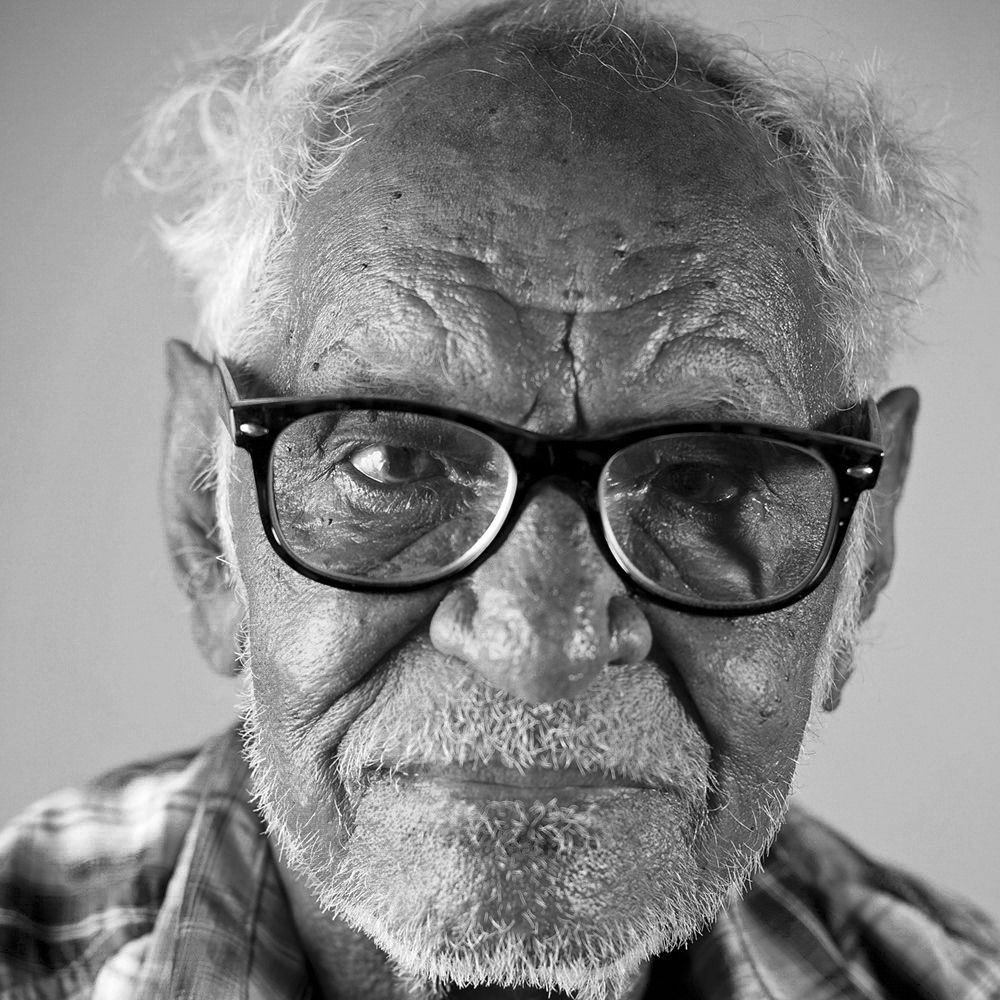Alan Griffiths
The Kimberley, Western Australia
2017
Displayed 2017 at Carriageworks

Alan Griffiths
Born 1933, Victoria River Station, Northern Territory. Lives and works the Kimberley, Western Australia
Ngarinyman/Ngaliwurru, Fitzmaurice region
Alan Griffiths’ art practice is multifaceted, encompassing painting, print-making, performance and sculptural forms. As a highly respected lawman, Griffiths’ inherent cultural obligations drive his art practice, as he interprets both cultural and contemporary experience. His painting style documents narratives of Country rich in spiritual references, corroboree, traditional stories and contemporary histories. Often characterised by rhythmic lines of figures, his work conveys playfulness against an underlying spiritual context. As corroboree ‘creator’, Griffiths constructs the elements of the Bali Bali Balga performance, bridging the ancestral spirit world and the contemporary through cultural performance.
Artist text
by Seva Frangos
The firelight is flickering and smoke is rising from a pit dug for tonight’s performance. There is general excitement as the sound of chatter and the slapping of ochre paint can be heard from those performers still hidden from view behind this sandy stage in the Kimberley. Then, emerging from the shadows at the prompt of Alan Griffiths’ resonant song call, appear remarkable large sculptural forms on the shoulders of men and boys, their bodies held rigid while they balance the supremely imposing and majestic dance boards.
The performers assemble in a line, commanding attention and conjuring both power and beauty. Then it begins: the dancers shapeshift from symbolic objects and forms into spirit beings that create Country or animals marking their territory, or throw constellations of stars into the universe. The striking balance and poise of the dancers is further emphasised as the boards become natural extensions of their human forms, elongating their bodies and movements as they share and celebrate the spirit world with their Ancestors.
This is Alan Griffiths’ stage, this is his performance and these are his sculptures. He, too, is an accomplished dancer as well as an acclaimed painter. Leading by example, his commitment to his multidisciplinary practice is without question, having practised at the flourishing Waringarri Aboriginal Arts almost since its inception over four decades ago. The art centre is his home away from home and he takes comfort and pride in its achievements. Acknowledged for his seniority in this arts community, Griffiths offers gentle yet firm direction and guidance to fellow artists. He is also a respected and eminent teacher of children, having dedicated his life to celebrating the shared rich culture and language of this community and Country, particularly through dance and song. The pride in his heritage and traditional childhood is woven into every painting, and his performance art is pure manifestation of his ancestry and its spirits.
Griffiths has spent his life creating and performing at every level. He has designed and made large-scale dance boards, first from pandanus leaves dyed with ochre and now from coloured wool; he has long carried ancestral stories, manifesting these in paintings and as performance art; he has walked his Country and lived its profound spiritual resonance; he has performed in small camps and on the large stages of international festivals; he has exhibited here and abroad.
Griffiths’ painting practice documents specific traditional dances and ceremonies, connecting the spiritual songlines of communities and families while also presenting the joyous celebrations of life. They are characterised by lines of small figures, some holding dance boards, others with clap sticks; some with men and women, others with children. These intense layered lines of figures create a sense of movement across the surface of the painting, and as you move around the work, the tiny figures disappear and the composition is reimagined as a mass of dots, echoing the more obvious ‘dot’ paintings of the desert.
It is not by chance that Griffiths’ paintings are produced in natural ochre – they are the very extension of the performances he orchestrates, where bodies are painted up in ochre and the ground is energised through stomping and jumping.
Goorbadjim balmarra, representing the hills of Bullo River and references the late Paddy Carlton, senior lawman and traditional owner of Goorbadjim

